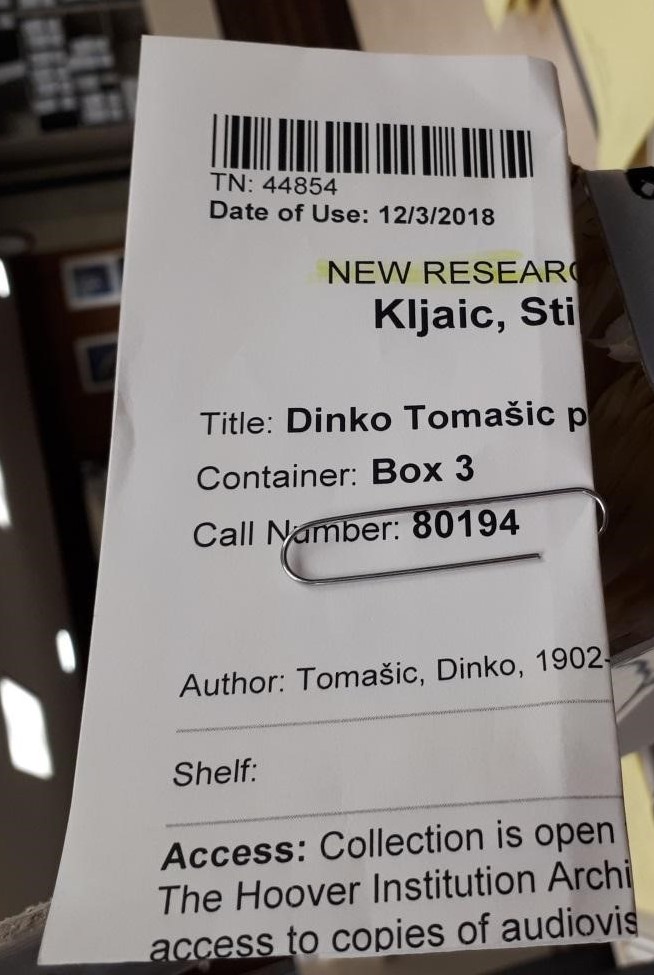The Dinko Tomašić Collection encompasses the émigré period of Tomašić's life, in other words, the period after 1945 when Tomašić could not return to his homeland because of his democratic views and critiques of the Yugoslav communist dictatorship and the formation of socialist society. The collection was not hidden from the secret police of the Yugoslav regime, for it was housed in Bloomington, Indiana, in the United States of America. However,… read more
The Dinko Tomašić Collection encompasses the émigré period of Tomašić's life, in other words, the period after 1945 when Tomašić could not return to his homeland because of his democratic views and critiques of the Yugoslav communist dictatorship and the formation of socialist society. The collection was not hidden from the secret police of the Yugoslav regime, for it was housed in Bloomington, Indiana, in the United States of America. However, Tomašić's research results, as conveyed in his works and publications, were unofficially prohibited in Yugoslavia, and his works were not quoted in Yugoslav sociological literature from the socialist period, in the first place because he eschewed the Marxist approach in his sociological work, so it was deemed a form of “reactionary literature.” The collection was deposited at the Hoover Institution by Tomašić's family in 1994. Archival processing was conducted by the professional staff of the Hoover Institution Library & Archives in 2009. At this time it is opened to the public. Thus far this collection has not been used either in exhibitions or in publications.
As part of his sociological research at Indiana University, Tomašić used questionnaires which were completed by political émigrés from Yugoslavia after 1945 and in the 1950s. These had been structured so that he asked his respondents various questions, for example about the military, theatre, education, religion, civic administration, universities, economic entities and the secret police, depending on their background. With these questionnaires about different institutions from the political and social spheres of a revolutionary society, Tomašić conducted his own research into communist society in Croatia and Yugoslavia by attempting to become familiar with the revolutionary changes which had imbued the aforementioned social institutions. The respondents were people from different political, social and national backgrounds, which gave Tomašić's sociological analysis additional credibility.
Based on his methodology, Tomašić published some remarkable studies on the phenomenon of communism in general after the war, with emphasis on its specific features in Yugoslav and East European circumstances. Firstly, his book Personality and Culture in Eastern European Politics was published in 1948. This was followed in 1953 by The Impact of Russian Culture on Soviet Communism, and then National Communism and Soviet Strategy was published in 1957. In all of these works, Tomašić tried to inform the American public and its sociologists about the social and cultural preconditions that had existed in East European societies before and, as such, ensured that communist ideology grew stronger and became widely accepted in their communities. In his last book, National Communism and Soviet Strategy, he examined the splits in the communist movement between Tito and Stalin and Soviet-Yugoslav relations after Stalin's death in 1953. Tomašić interpreted the conflict between Soviet and Yugoslav communists by using his previous work to explain that the cultural, psychological and mental structure of the Dinaric population, which predominated in the Partisan movement, played a crucial role in the conflict with Moscow as the centre of the world communism (Cicak, 1976).
read less
